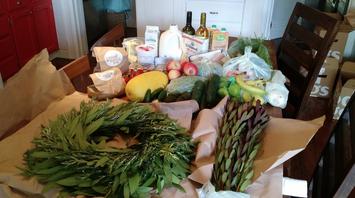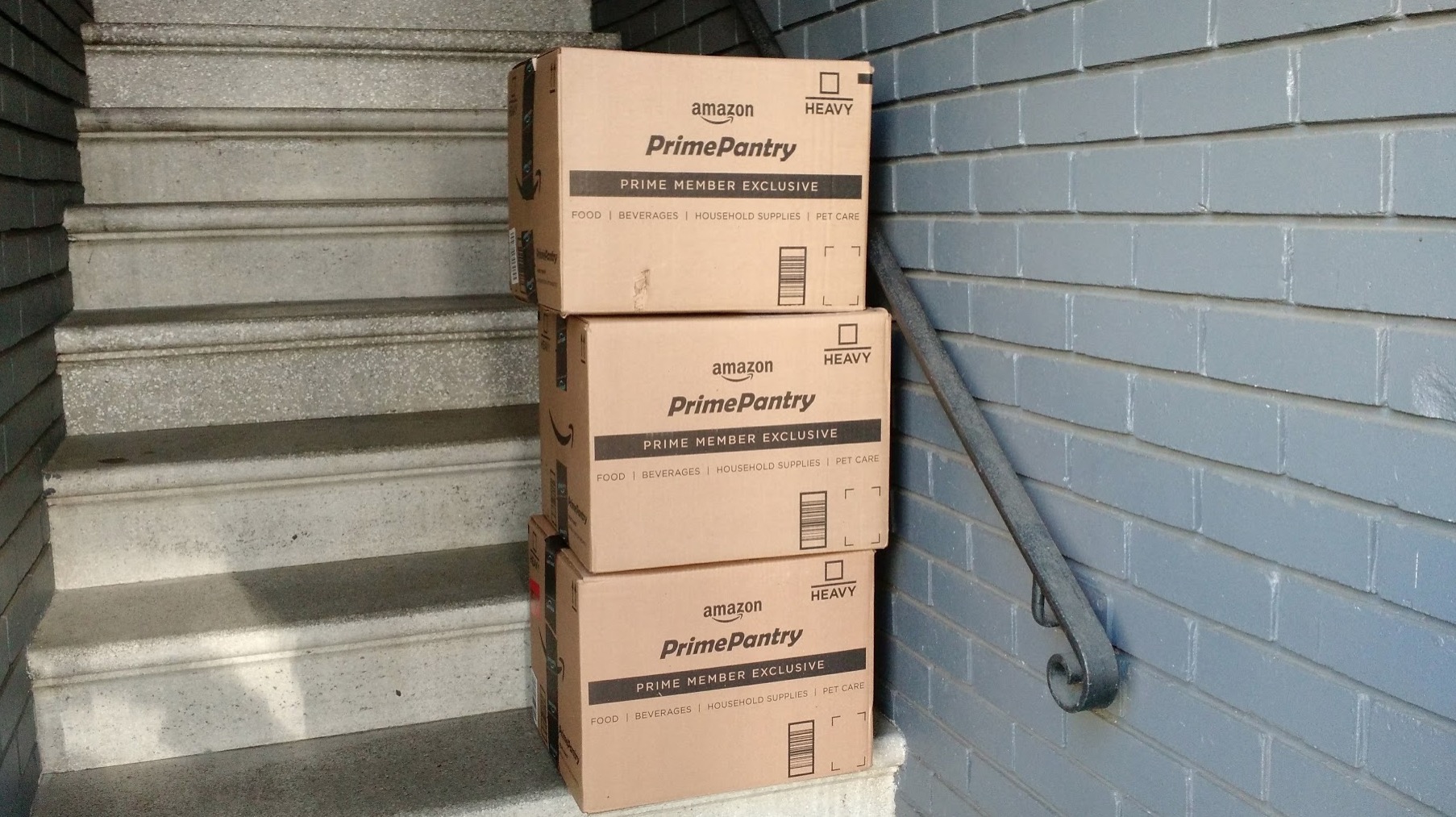
I was at a friend’s house when she got a delivery of groceries. The boxes arrived at her door from one of the many new services that allow customers to shop online. Fresh fruit, veggies, meat, wine, eggs, cheese, milk, Christmas wreathes, and fresh cut flowers. She just pushed a few buttons and voila!






I happen to have another friend in the neighborhood who works at this particular company so I get an occasional glimpse into the evolving business model from her perspective. San Francisco is a test market. Like so many new companies that launch here, once the concept is proven and refined more investment is gathered and a nationwide expansion ramps up in segments. Some companies dream of being the next Airbnb or Lyft. Others just want to make themsleves appealing enough for an IPO (Initial Public Offering) and cash out. Others want to be acquired by an existing established conglomerate. In many cases the physical assets of a start up are irrelevant (or nonexistent) since the technology and data bases are what others buy and build on.



Parallel to these experiments in direct retail on the interwebs are complimentary start ups organized around “last mile” delivery mechanisms. With so much stuff traveling from Point A to Point B traditional package services are being disrupted or added on to with specialized options and increased local capacity. These too will eventually evolve into larger national systems one way or another.




It’s worth noting that my friend who now orders her groceries on demand as if food were Netflix (another example of retail that migrated to the virtual universe) lives exactly one block from both a Safeway and a Whole Foods not to mention dozens of smaller shops of all kinds. Physical proximity to retail has nothing to do with what’s driving her to shop online. Neither is price.




Two blocks away is a weekly farmers market that sells absolutely everything including produce, bread, honey, meat, and seafood. The quality on offer is a cartoon extravaganza of local, organic, biodynamic, grass fed, free range, blah, blah, blah. Quality isn’t an issue in the neighborhood.





Increasingly the retail experience has become less and less about personal service and more about chain stores pushing more work off on to technology and their customers. It’s all a desperate attempt to cut costs and reduce labor. In recent months I’ve found myself waiting in line with items to purchase while too few employees struggled to manage too many technical procedures. More than a few times I’ve looked at what I had in my basket, realized the time and effort weren’t worth it, and simply walked out of the store without buying anything. The quality of the experience has declined significantly.





The get-big-or-get-out supersizing of retail has resulted in giant warehouses that function with an economy of scale. We all drive out to the edge of town and load up the car with pallets of toilet paper and frozen nuggets. The next logical step in this progression is to have the warehouses distribute products directly to homes. There’s just no reason to show up in person to buy five gallon jugs of laundry detergent.




From a city planning perspective we’re about to have a whole lot of really big empty buildings and thousands of acres of vacant parking lots litter the landscape. We’re just not going to need all these retail buildings anymore. And this new glut will be on top of all the current half dead shopping centers and strip malls we already don’t know what to do with. For decades many municipalities have engaged in an arms race to generate sales tax. If customers could be drawn in from other towns the winning jurisdictions could effectively cream off revenue from their neighbors. Hence the massive proliferation of premium outlet malls, mega auto dealerships, casinos, big box stores, and the like. That entire dynamic has left much of the country seriously over retailed and it’s going to get much worse.







Here’s one of my predictions for how cash starved governments are going to respond. The same technology that facilitates virtual commerce can also be used to create entirely new tax revenue streams. Since all these delivery trucks already have real time tracking devices new per mile fees for operating on public roads will be introduced. Sooner or later every vehicle traveling through every jurisdiction is going to pay for the privilege.

Here’s another twist to this story. I used to buy replacement bags for my vacuum cleaner at a local mom and pop shop. This was the same shop where I bought the vacuum itself. A couple of years ago the shop keeper told me they were relocating to a distant suburb. I stocked up on bags, but eventually ran out. At that point there were no longer any physical places near me that sold the kind I need. Buying mail order replacement bags became my only option. We’re going to see more of this in the future.


There’s nothing particularly new about buying things remotely and having them delivered. The first Sears catalogue was published in 1888 and manufactured goods were sent out across the nation by rail. Local delicatessens have been delivering groceries to apartments in places like New York since forever with no more technology than a telephone and a teenager on a bicycle. And pizza and Chinese food have appeared at suburban front doors for decades.



But what we’re looking at now is a shift in commerce that’s going to have a profound impact on the built environment and economic flows. There are going to be all sorts of new winners and unexpected losers. In places with high land values and pent up market demand redundant retail properties will be redeveloped to other productive uses. But when land is cheap and the market is soft these places are going to fester with no solution in sight. Gird your loins.
This piece first appeared on Granola Shotgun.
John Sanphillippo lives in San Francisco and blogs about urbanism, adaptation, and resilience at granolashotgun.com. He's a member of the Congress for New Urbanism, films videos for faircompanies.com, and is a regular contributor to Strongtowns.org. He earns his living by buying, renovating, and renting undervalued properties in places that have good long term prospects. He is a graduate of Rutgers University.












